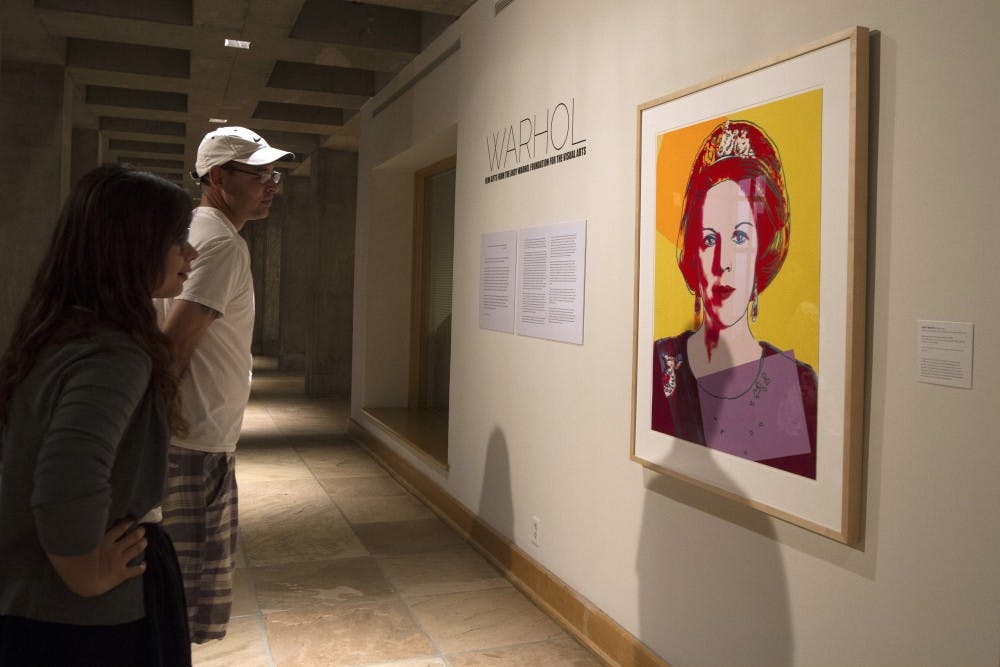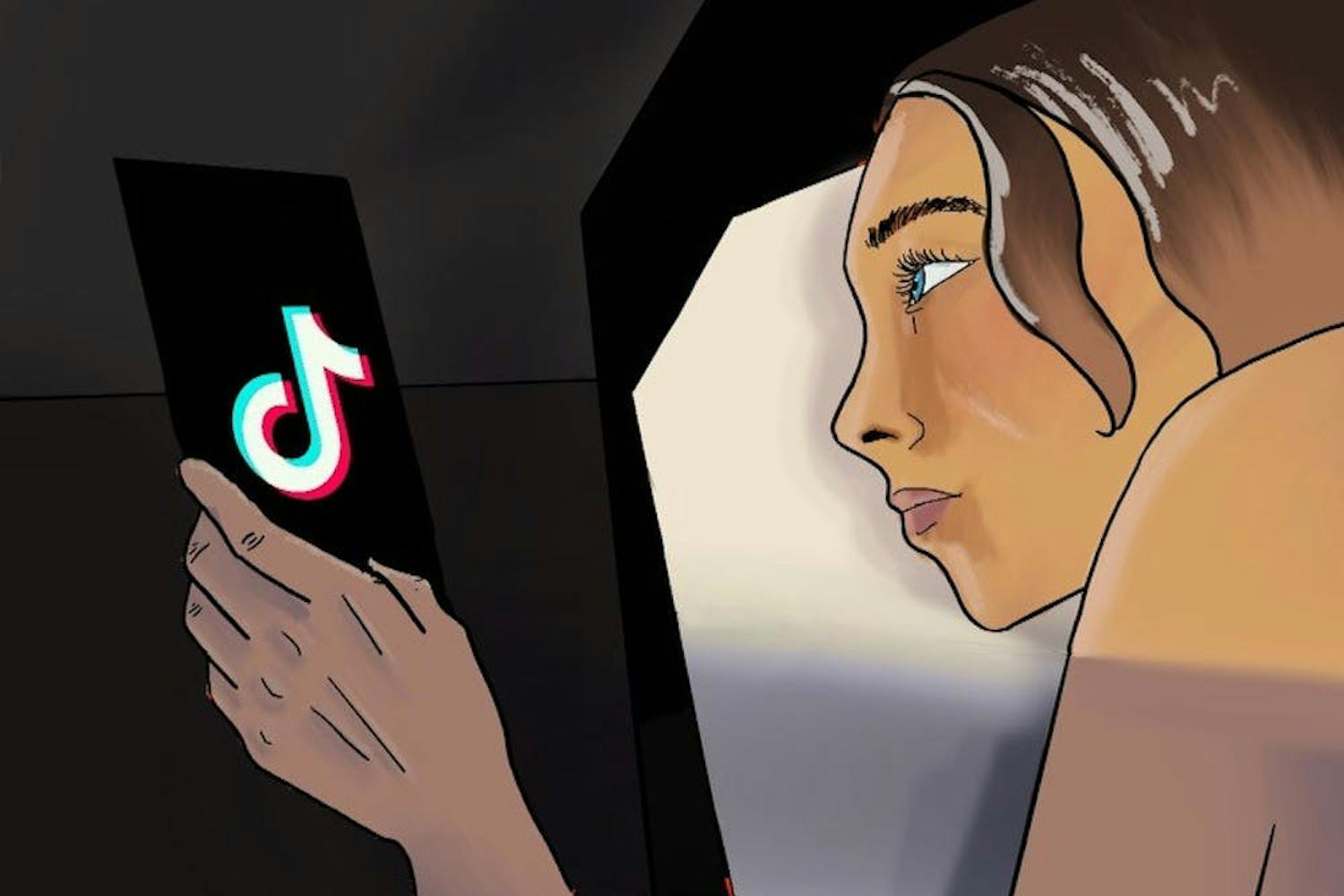 Robert Jones and his daughter Jessica Jones look at Andy Warhol’s Queen Beatrix screenprint at the ASU Art Museum on June 3, 2014. The museum received six Warhol prints as a short-term donation from the Andy Warhol Foundation for the Visual Arts. (Photo by Sean Logan)
Robert Jones and his daughter Jessica Jones look at Andy Warhol’s Queen Beatrix screenprint at the ASU Art Museum on June 3, 2014. The museum received six Warhol prints as a short-term donation from the Andy Warhol Foundation for the Visual Arts. (Photo by Sean Logan)The ASU Art Museum added a little more history with a short-term donation of six Andy Warhol prints from the Andy Warhol Foundation for the Visual Arts.
This artist has continued to play a prominent role in art since his 1989 death. From his early years to the present, he has helped create the style of pop art, said Jean Makin, print collection manager and curator of the ASU art museum.
“He was sort of a pinnacle figure in that pop art movement,” she said. “He really did different things with a figure, with color, with line work.”
Pop art incorporates pieces of popular culture. Warhol's prints go from superstar celebrities such as Michael Jackson and Marilyn Monroe, to advertisement replicas including Campbell’s Soup.
One of the pieces the ASU Art Museum obtained was modeled after the Sitting Bull, which was produced for Warhol’s Cowboys and Indians Series but not used in it.
“At the last minute, he decided not to include that print with the series,” Makin said. “He wanted to change some of the background elements. Compared to the other prints that were in the series, it just didn’t seem to fit in.”
Warhol’s prints were created by separate screens laid on top of each other, she said.
“Once all these different screens and different layers are on top of one another, you finally see the image,” Makin said.
ASU film production and drawing senior Dillon Vaughn works at the museum. He said layers of prints were much more defined in person as opposed to pictures of the art.
“There’s just this texture in the prints that you don’t notice, especially in the Sitting Bull. … The different layers of the print — you can’t see that online or in a book or anything; you have to see it in person” he said.
Makin said Warhol also uses vibrant colors such as pink and light red in his work. This was evident in two of his pieces from the Queen series. They portray a pair of queens: Queen Beatrix of the Netherlands and Queen Margrethe II of Denmark. Makin noted the high contrast in face colors but distinct outlines of the characters.
Warhol’s work has coaxed a higher volume of people into the museum.
"We’ve had a lot of people come to see the Warhols,” Vaughn said. “As soon as you put that name up in a museum, it’s going to draw a huge crowd that doesn’t normally come out.”
Jeanne Schaser, public relations and marketing specialist of the ASU Art Museum, said the prints showed aspects of Warhol’s mind and work that generally weren’t seen during the artist’s life.
“This is the chance to see work that Warhol wouldn’t have necessarily intended to share with the public,” she said.
Makin said the newest donation is very beneficial to the museum.
“We’re very pleased with the selection they gave us, and we’re so happy to have them in the collection, because obviously it’s not something that we can afford to purchase,” she said.
The prints will remain at the ASU Art Museum, on Mill Avenue and 10th Street, through the summer. Entry is free.
“Andy Warhol is a really important art historical figure of not only American culture but Western pop art,” Makin said. “(He’s) just an important figure to have in collections, so we’re really thrilled.”
Reach the reporter at logan.newman@asu.edu or follow him on Twitter @Logan_Newsman




